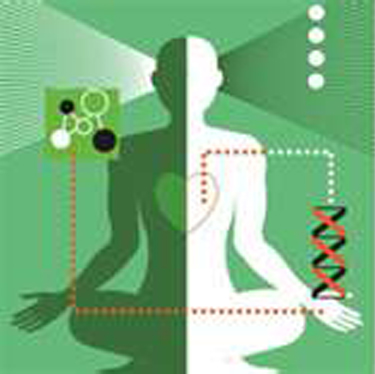
Biofeedback
What is Biofeedback?
Biofeedback is a noninvasive tool for helping you to be more aware of certain physiological activity patterns of your body so that you can reduce symptoms such as pain, tension, and physiological arousal. Biofeedback involves using various computerized or electronic instrumentation tools to monitor specific, often unconscious physiological activities of your body. Though some form of auditory or visual means, such as computerized graphs or sounds, these physiological response patterns are fed back to you with these instruments. We then teach you skills for gaining greater conscious control over the functioning of your body through a variety of techniques that are used in the sessions and practiced in your home environment. Once you are more aware of what your body is doing it is easier to change patterns of responding to stress in order to reduce or eliminate your unwanted symptoms.
How Chronic Stress May Impact Your Body:
Our bodies are designed to react to a variety of normal stressors in our daily lives. Physiologically, our bodies will adapt to momentary stressors by changing our breathing rate so that we take in enough oxygen, by increasing our heart rate so that oxygen gets distributed to the brain and we can think better, or by giving us a burst of adrenaline to get our physiological responses moving faster so that we can get through something that is happening without being hurt.
Our bodies respond to stress by activating a part of our nervous system called the autonomic nervous system, which is responsible for activating us with all of the physiological changes that were described above. The autonomic nervous system actually as two components, the sympathetic part, which activates us physiologically, and the parasympathetic part, which slows us back down after we have activated to respond to a demand. The sympathetic component of the autonomic nervous system is much like the accelerator pedal on your car, designed to gear up the physiology for action and/or to prepare the body to respond and cope with danger. If left on too long, the sympathetic nervous system causes various organ systems to become depleted. As a result, we may experience a variety of symptoms. When stress becomes intense over a long period of time or if stress is present chronically in your life, it is like the accelerator pedal gets stuck. Then, your body may show signs of wear and tear in the form of pain or discomfort, such as tension or migraine headaches, fibromyalgia symptoms, chronic tiredness, hypertension, immune system decline or a variety of other health problems which are triggered by stress.
If the sympathetic nervous system is like the gas pedal, then the parasympathetic nervous system is like the brake pedal. The parasympathetic nervous system causes relaxing of our stress-related physiologic processes and returns our tissue and organ functioning back to normal. This relaxation response allows recovery from the wear and tear on your body that is caused by sympathetic arousal and the stress response. Under normal conditions, your body has the parasympathetic nervous system to help it return to a non-stressed state. Chronic stress may impair the working of this system and, as described above, begin to deplete systems of the body and cause symptoms.
Symptoms of stress-induced physiological arousal or tension may not be immediately noticeable, but may over time, develop into habits that persist, such as tensing your back and neck, clenching your teeth, favoring a certain muscle area after an injury, etc. A habitual pattern such as this is usually not something you are aware of until it develops into chronic pain or discomfort.
Our Thinking Patterns and Stress Response:
In addition to the purely physiological responses we have to stress, we have certain internal thought patterns that help us navigate through stressful situations, such as beliefs and expectations that we can get through something or know the way to master a given demand. Our thoughts have an impact on our body and may result in the body temporarily working harder to accomplish something. Under certain situations, the internal processes of our thoughts and expectations may become part of the problem, such as when something extremely stressful or even hurtful happens and we continue to respond to the world as if we are in danger all the time. Then, the body manifests anxiety or worry, fears, possibly even flashbacks of the prior event. This is carried in the body in the form of constant tension in the muscles (through chronic sympathetic nervous system arousal)—the muscles are always ready to respond even when they should be at rest. The internal thought and physiological responses have become conditioned and are more related to past experiences that have nothing to do with the current situation.
How Biofeedback and Other Treatments Help:
Biofeedback is used to reduce the stress response and increase the relaxation response that the parasympathetic nervous system controls. Biofeedback helps empower you to achieve better functioning through awareness and control. Biofeedback paired with relaxation and certain other therapy tools (desensitization, cognitive therapy, movement, body awareness, etc.) and/or bodywork is designed to reduce tension-fueling thought patterns and break habitual holding of tension, so that you can reduce your stress response and minimize stress-related bodily discomfort.
Conditions Treated:
-
High Blood Pressure
-
Generalized Stress Response
-
Migraine Headaches
-
Tension Headaches
-
Chronic Muscle Tension
-
Back and Neck Pains or Spasm
-
Raynaud’s Syndrome
-
TMJ
-
Anxiety and Nervousness
-
Certain Cardiac Arrhythmias
-
Illnesses worsened by stress can benefit from Biofeedback and Stress-reduction training (Irritable Bowel, Diabetes, Lupus, Multiple Sclerosis, Asthma)
-
Poor Concentration
-
Peak Performance
What Types of Biofeedback Do We Offer:
- Temperature
- Heart Rate Variability
- Pulse
- Blood Pressure
- Surface Electromyography (sEMG)
- EEG Biofeedback (Neurofeedback)
- HEG (Hemoencephalography)
- Respiration
- Galvanic Skin Response/Electrodermal Response
